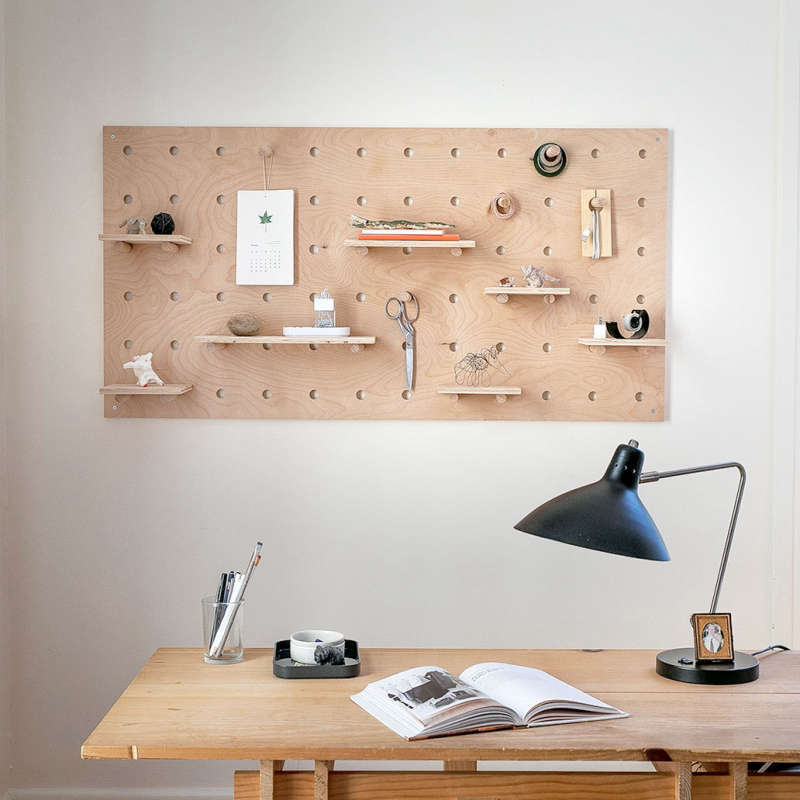We all know how to snag the best stuff at a tag sale—get there before the crowd, pounce when you see something you want. Getting the best deals, on the other hand, often means being there just as the doors are closing, when sellers are desperate to unload what’s left.
But it’s a whole different game when you’re shopping online—whether you’re in the market for high-end antiques or flea-market finds. More and more sites are selling these items, some by auction and some at set prices. We asked around and came up with some tips for buyers. Consider this an ad-hoc user’s guide.
N.B.: Featured photograph by Eric Piasecki for Remodelista, from Quiet, Please: A Stylish Apartment in Bustling Jackson Heights, Queens. (The Paul McCobb dining set was sourced on eBay.)

1. Know what items are worth.
This isn’t so hard for designers and others in the trade—it’s their job to know the value of different types of merchandise, depending on the age, condition, and scarcity. For the rest of us, the more we browse the more we learn. That means browsing online but also, if possible, at estate sales, auctions, antiques fairs, and shops. Bonus: You’re likely to meet fellow collectors, so you can trade info about market prices and how to tell the authentic from the knockoff.
2. Get inspiration from curated shops.
Remodelista contributing editor Justine Hand, who sources vintage pieces extensively online, recommends frequenting stores and websites that reflect the style you love, just to see what’s available and at what prices. “For example, everything at the Red Chair in Hudson is guaranteed to be fabulous. So if you’re a bit unsure of what’s good, stores like this can be the perfect place to start your education,” she says. Elsie Green, which sells vintage French home goods, is an example of a curated online shop, as is 1st Dibs—known for rare high-end wares, with prices to match. Once you’re confident, you can begin searching online for similar items that might be offered for less.

3. Pin down the item’s condition.
Is there any damage or wear and tear? Read the description and scrutinize the photos. “Sometimes there’ll be as many as ten pictures for one item,” says Midwest designer Maureen Hawley, who shopped online and at second-hand stores to furnish a four-bedroom 150-year-old house in Ann Arbor on a budget (she now rents it out on Airbnb). “Look at the photos carefully, zoom in, and see what the piece looks like from all angles.” And, as always, check the dimensions of the piece—if it’s big, will it fit through your front door?
“Sometimes I’ll receive something from eBay that’s not quite what I expected,” says Avril Nolan, who often shops for antiques and vintage items for herself and to sell at Form Atelier, the Soho store she set up with her husband, Quy Nguyen. “To avoid that, I might email the seller before placing the order, if that’s possible, and get them to disclose more.”
And note that if you still want something that’s not in the best shape, you should factor in the price of repairs before making an offer.
4. Be prepared to negotiate.
Just as at a tag sale, haggling often gets you a lower price. In fact, it’s easier when you’re not face-to-face with the seller: Nobody can see you online, so if bargaining usually makes you uncomfortable, you’ll find it much easier.
Obviously, you can’t bargain on an auction site, but you often can elsewhere—or look for a “make an offer” button.

5. Know the shipping charges before you bid.
Depending on the location of the item, shipping charges can kill a deal. Hawley’s online go-to is Everything but the House, better known as EBTH, which specializes in estate sales. She was recently coveting an old wooden trunk on the site, available for $15, until she noticed it would take an extra $200 to reach her. Enter your zip code before you start bidding to get an estimated shipping charge.
Often you can filter listings by area code so you know what’s for sale near your home. That cuts shipping costs—or even reduces them altogether, if the item is close enough that you can go pick it up. Otherwise, even a bargain-basement price can lose its luster once shipping is factored in.
6. Set a dollar limit.
Before you start to bid on an auction site, decide how much you’re willing to spend on an item—and stick to it. “You pick your high bid, and then just move on if you don’t get it,” says Hawley.
7. Read the fine print.
Different sites take different commissions from sellers, often depending on the selling price, and some payment methods are more buyer-friendly than others. Keep in mind, for example, that PayPal’s Purchase Protection makes getting refunds easy. And note that shipping times can vary widely.

8. Know the returns policy.
Many established sites have reasonable returns policies. “Some people are still intimidated about buying online, and the sites want you to be comfortable with it,” says Nguyen of Form Atelier. “If something’s been misrepresented, you can return it. But on a site like eBay, you’re interacting with individuals who make their own agreements with sellers. Be sure you know what those policies are, in case you receive something that you feel was misrepresented.” (If a seller disputes a refund, eBay will step in to adjudicate.)
EBTH cites its policy clearly: “Through EBTH, you are purchasing an item that was consigned by us on behalf of a seller or business. Sellers are paid in full for the items that are listed and sold through our site; therefore, we cannot accept returns.”
9. Shop around.
Is an item on 1st Dibs out of your budget? Try searching consignment sites such as Chairish, where prices are lower because sellers don’t pay for listings (the site does take 20 percent of the sale price).
“Occasionally a dealer will list an item on 1st Dibs but also put it up on their own website,” says Nolan. “Since 1st Dibs charges dealers a hefty fee, you’ll probably pay less for the same item on the dealer’s site, where you may be able to negotiate the price one on one.” But don’t expect it to be easy to find dealer’s names on 1st Dibs, since the company doesn’t want its prospective customers cutting out the middleman. “While we recommend following the rules, there are sites that give buyers the freedom to contact the sellers,” Nguyen points out.
Sometimes the same item is offered at the same price on different sites but not always. Nguyen says when he was looking for a pair of iconic Mies van der Rohe Barcelona chairs for seating in their shop, he found a pair listed at about $5,500 on 1st Dibs, then saw the same chairs on Chairish for about $4,200. “I knew it was the same dealer because the images and description were the same. Then, in a rare moment, I found the same chairs on Craigslist, which takes no cut on sales, for $3,800.”

10. Try eBay search tricks.
Several frequent buyers say they find good deals by deliberately misspelling the name of an item or designer in their eBay search. If the seller made a mistake, fewer shoppers will have located the item, so you’ll be bidding with less competition. But if it’s a set price, move fast. Sometimes online shopping is all about getting lucky.
11. Get on the inside track.
Justine believes it helps to get to know online sellers you like. “I have a couple of favorite sellers on Etsy that I return to frequently,” she says. “Once you establish a buying relationship you can ask them to look out for specific things and even create a private listing for you.”
12. Avoid buyer’s remorse.
The old edict stays true here too: buy only what you love. Don’t waste money on something that doesn’t fit your home or your taste.
More advice on sourcing online:
- Expert Advice: An Insider’s Guide to Sleuthing Antiques and Housewares in Paris
- Expert Advice: What to Source from Salvage, with Zio & Sons
- Expert Advice: 7 Tips for Sourcing from Salvage with Architectural Designer Tom Givone
Frequently asked questions
What are some tips for saving money when buying antiques and vintage items online?
Some tips include looking for items with minor flaws or imperfections, searching for items on lesser-known online marketplaces, and negotiating with sellers for lower prices.
What are some good online marketplaces for buying antiques and vintage items?
Some popular options include Etsy, Chairish, Ruby Lane, and 1stdibs. However, there are also many smaller marketplaces and independent seller websites worth exploring.
How can I tell if an antique or vintage item is authentic?
Doing your research is key. Learn about the characteristics of the specific item or era you're interested in, and look for signs of wear and tear that indicate the item has been around for a while. Make sure to ask sellers for detailed photos and descriptions, and request a certificate of authenticity if possible.
What are some red flags to look out for when buying antiques and vintage items online?
Some red flags include sellers who refuse to provide detailed information or photos, who ask for payment through an unsecured method, or who have consistently negative reviews from previous buyers.
What should I consider when negotiating with a seller for a lower price?
Be polite but firm, and come prepared with research that supports your proposed price. Consider offering to pay for shipping or asking for a discount if you're purchasing multiple items from the same seller. Remember that haggling is a common practice in the antiques and vintage market, and many sellers are willing to negotiate.




Have a Question or Comment About This Post?
Join the conversation